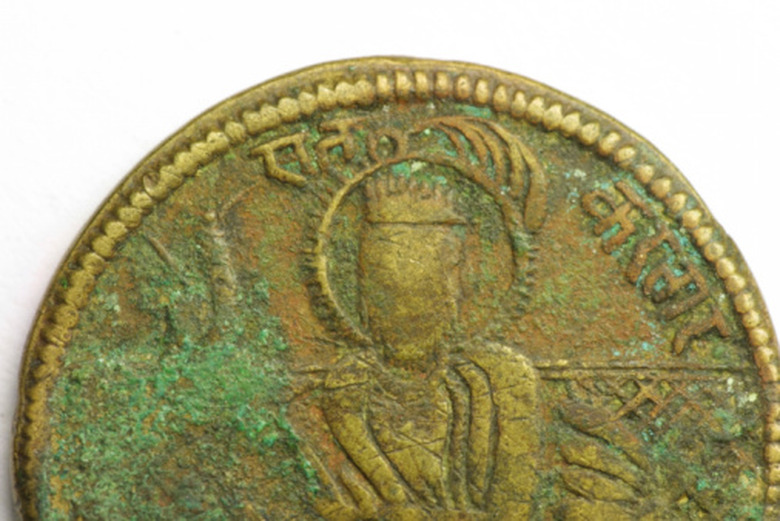How To Remove Coin Corrosion
Things Needed
-
Baking soda
-
Toothbrush
-
Rag
-
Plastic bottle
-
Tomato juice
-
Orange juice
-
Vinegar
-
Soap
-
Cup
-
Mineral oil
-
Olive oil
-
Acetone nail polish remover
Warning
Removing dirt and corrosion can damage the coin itself. In some cases, cleaning a coin can devalue it. If you are concerned about the value of your coins, seek the help of a professional.
Avoid using abrasive substances, such as baking soda, on heavily corroded, damaged or soft metal (gold) coins. These substances can cause irreparable damage.
Coins corrode when they come into contact with chemicals, minerals or the natural elements. Corrosion is unsightly and can cause lasting damage, such as pitting and scarring, to the surface of the coins. Coin collectors and hobbyists can remove corrosion from coins using a number of homegrown methods. There is much debate, even among professionals, about the viability and safety of these methods. While professional cleaning options, like coin soaks and ultrasonic cleaning machines, exist, they are costly and not widely available to the general public.
Baking Soda
Step 1
Wet the coin thoroughly with clean water.
Step 2
Roll the coin in baking soda. Baking soda is an abrasive substance.
Step 3
Scrub the corrosion away using a toothbrush or rag. The combination of the abrasive baking soda and the scrubbing action causes the corrosion to chip away.
Step 4
Rinse the coin clean.
Step 5
Repeat the scrubbing and rinsing until the corrosion is removed.
Acids
Step 1
Fill a plastic bottle with an acidic substance, such as tomato juice, orange juice or vinegar. Acidic substances loosen the corrosion and allow it to fall away.
Step 2
Place the coin in the bottle.
Step 3
Put the lid on the bottle.
Step 4
Shake the bottle containing the coin for 5 minutes. This ensures the acidic substance reaches every crevasse of the coin.
Step 5
Allow the coin to sit in the bottle with the acid overnight, if necessary. Wash the coin thoroughly using soap and water after removal.
Mineral Oil
Step 1
Fill a cup with mineral oil or olive oil. Either one is viable for removing corrosion from coins. The oils contain trace minerals that loosen dirt and corrosion on metal coins.
Step 2
Place the coin in the cup. Allow the coin to soak.
Step 3
Remove the coin after the corrosion has fallen away. This can take several weeks.
Step 4
Rinse the coin using clean water. Remove the oil using a soft, clean cloth.
Step 5
Pat down the coin with baking soda and rinse again. Baking soda neutralizes the minerals present in the oils and prevents them from doing long-term damage to the coin.
Acetone
Step 1
Place acetone nail-polish remover in a glass container.
Step 2
Drop the coin into the container and acetone. Allow the coin to sit for up to 5 minutes.
Step 3
Wash the coin thoroughly using soap and water to remove the corrosion and acetone.
Step 4
Soak the coin again, if desired.
Step 5
Pat the clean coin with baking soda to neutralize the acetone. Rinse again.
References
- "The Insider's Guide to U.S. Coin Values"; Scott A. Travers; 2008
- "2,001 Amazing Cleaning Secrets"; Jeff Bredenberg; 2004
- "Clean It, Fix It, Eat It!"; Joey Green; 2001
- "Coin Collecting 101: What You Need to Know"; Alan Herbert; 2005
